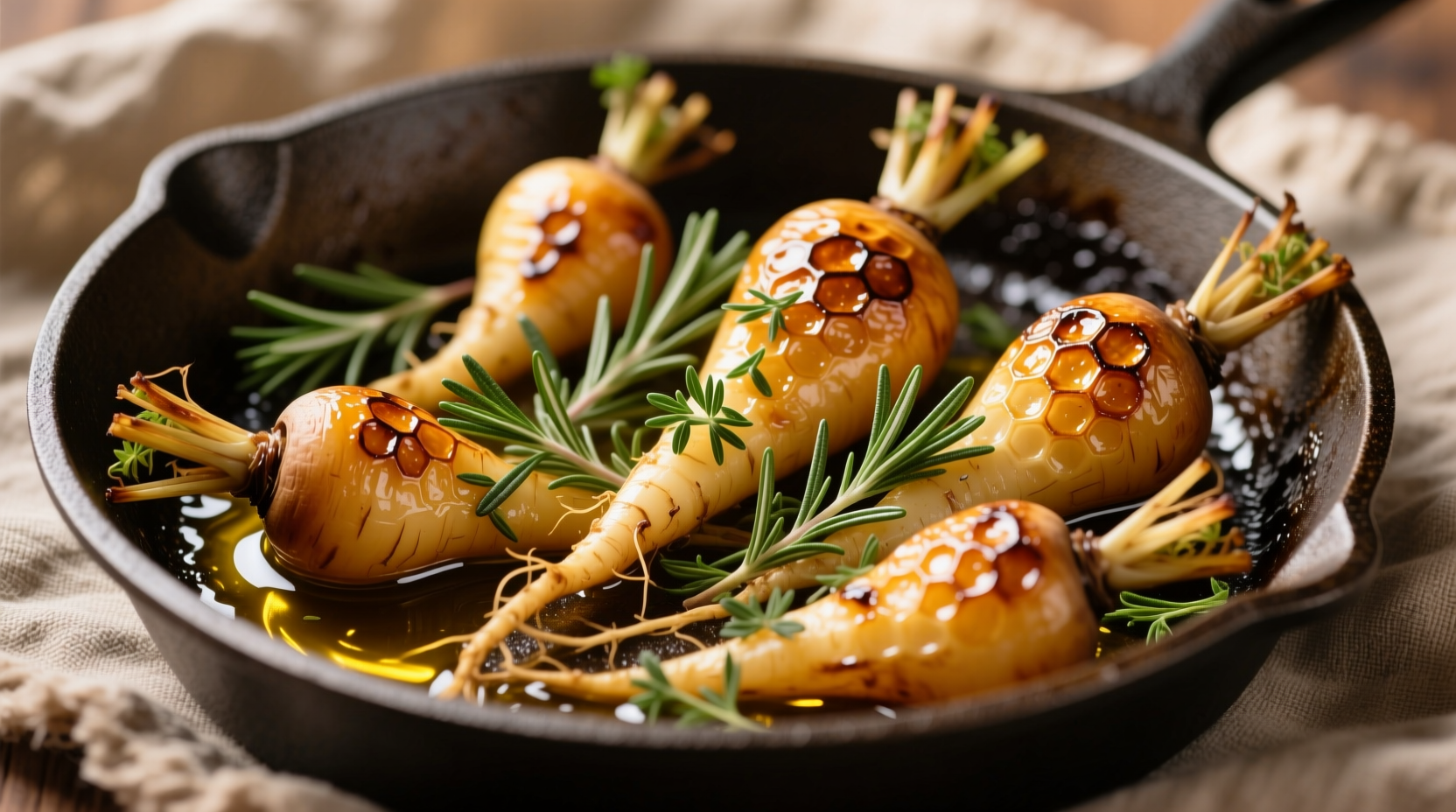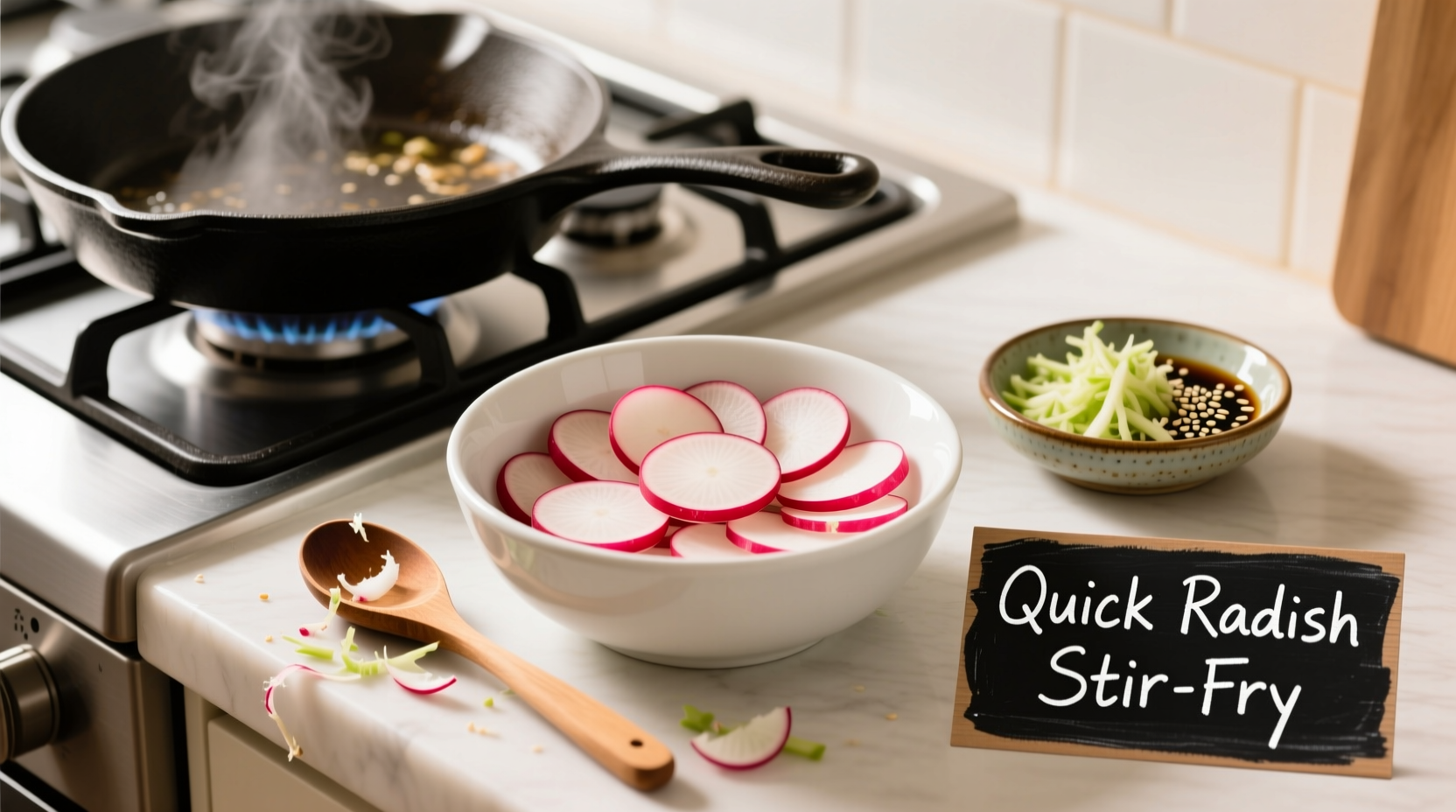Raw radishes often get dismissed for their sharp bite, but cooking unlocks a completely different culinary experience. When heat transforms these humble root vegetables, their peppery punch mellows into delicate sweetness with earthy undertones. Professional chefs have long known that cooked radishes resemble a cross between turnips and beets—making them a versatile, underutilized ingredient worthy of regular rotation in your kitchen.
Why Cooking Radishes Changes Everything
Radishes contain glucosinolates—compounds responsible for their characteristic peppery flavor. When exposed to heat, these compounds break down through enzymatic reactions, reducing bitterness while developing complex caramelized notes. According to USDA nutritional data, cooking actually increases the bioavailability of certain antioxidants while preserving vitamin C content when prepared properly.
| Preparation Method | Texture Result | Flavor Transformation | Best Radish Types |
|---|---|---|---|
| Roasting | Crisp exterior, tender interior | Sweet, nutty, earthy | Globe, Watermelon, Black Spanish |
| Sautéing | Firm but yielding | Mellow pepperiness, buttery notes | All varieties |
| Grilling | Charred exterior, juicy center | Smoky complexity, reduced sharpness | Larger varieties (1"+ diameter) |
| Braising | Melts-in-mouth tenderness | Rich, almost meaty depth | Black Spanish, Winter Daikon |
Step-by-Step Cooking Methods
Perfect Roasted Radishes (The Easiest Method)
Roasting requires minimal effort but delivers maximum flavor transformation:
- Preheat oven to 400°F (200°C)
- Cut radishes in half (quarters if larger than 1")
- Toss with 1 tbsp olive oil per pound, ½ tsp salt, and fresh thyme
- Spread in single layer on parchment-lined baking sheet
- Raise at 20-25 minutes until golden brown and fork-tender
Pro tip: Add radish greens (if fresh) during the last 5 minutes for a complete vegetable side dish. The heat transforms both components into complementary elements—tender roots and crispy greens.

Sautéed Radishes for Quick Weeknight Meals
Sautéing works particularly well when you want to preserve some texture contrast:
- Heat 1 tbsp butter and 1 tbsp olive oil in skillet over medium-high
- Add halved radishes cut-side down (don't crowd the pan)
- Cook undisturbed for 4 minutes until golden crust forms
- Flip and cook 4-6 minutes more until tender
- Finish with lemon juice and chives
Flavor Pairing Science
Cooked radishes respond exceptionally well to specific flavor combinations due to their transformed chemical composition. Food science research from the Culinary Institute of America shows that:
- Fat-based carriers (butter, olive oil) enhance absorption of fat-soluble compounds released during cooking
- Acidic elements (lemon, vinegar) balance the natural sugars that develop
- Umami-rich ingredients (miso, Parmesan) complement the earthy notes
For optimal results, try these pairings:
- Spring preparation: Roasted radishes with brown butter, lemon zest, and toasted almonds
- Autumn variation: Braised radishes with apple cider, thyme, and crispy pancetta
- Winter dish: Black radish gratin with Gruyère and nutmeg
Avoiding Common Cooking Mistakes
Even experienced cooks encounter these radish pitfalls:
Overcooking Leads to Mushiness
Radishes contain pectin that breaks down quickly. For firm-tender results:
- Roast at higher temperatures (400°F+) for shorter times
- Check doneness at 15 minutes for small radishes
- Remove from residual heat when slightly underdone
Underseasoning the Transformation
Raw radishes need minimal seasoning, but cooked versions require more:
- Season in layers—before, during, and after cooking
- Use 25% more salt than you would for similar vegetables
- Finish with flaky sea salt for textural contrast
Seasonal Context and Availability
Understanding radish seasonality dramatically impacts cooking results. Unlike many vegetables, radishes have distinct seasonal varieties:
- Spring (March-May): Small globe radishes—best roasted or grilled to preserve delicate texture
- Summer (June-August): French breakfast radishes—ideal for quick sautéing
- Fall (September-November): Watermelon and black radishes—perfect for braising
- Winter (December-February): Daikon varieties—excellent for slow cooking methods
According to agricultural data from the USDA, spring radishes contain higher water content (95% vs 92% in winter varieties), which explains why they cook faster and require less liquid in preparations.
Practical Applications for Home Cooks
Transform your cooked radishes from side dish to star with these chef-tested techniques:
Radish Toppesto
Don't discard those greens! When cooked radish greens become tender, blend them with:
- 2 cups cooked radish greens
- ¼ cup toasted walnuts
- 1 garlic clove
- 3 tbsp olive oil
- Salt to taste
This vibrant pesto works beautifully on pasta, toast, or as a sandwich spread.
Radish "Potato" Salad
Substitute roasted radishes for potatoes in your next salad:
- Use 2 parts roasted radishes to 1 part boiled potatoes
- Toss with Dijon vinaigrette while warm
- Add fresh dill and capers for brightness
The radishes absorb dressing differently than potatoes, creating a more complex flavor profile with less oil needed.
Troubleshooting Guide
When your cooked radishes don't turn out as expected:
| Problem | Why It Happens | Solution |
|---|---|---|
| Bitter after cooking | Overcooking or using aged radishes | Reduce cooking time; add pinch of sugar to pan |
| Mushy texture | Low oven temperature or overcrowded pan | Roast at 425°F; ensure single layer with space between pieces |
| No flavor transformation | Insufficient seasoning or fat | Use 1.5x more oil/salt than expected; finish with acid |
Storage and Leftover Strategies
Cooked radishes maintain quality differently than raw:
- Refrigerate in airtight container for up to 4 days
- Freeze roasted radishes for up to 3 months (best for soups/stews)
- Revive leftovers by briefly crisping in air fryer (3 minutes at 375°F)
Leftover cooked radishes transform beautifully in these applications:
- Add to grain bowls for earthy sweetness
- Puree with broth for velvety soup base
- Chop and mix into frittatas or quiches











 浙公网安备
33010002000092号
浙公网安备
33010002000092号 浙B2-20120091-4
浙B2-20120091-4